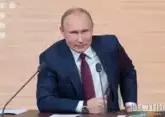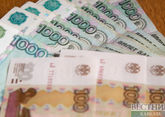Russia's State Duma has passed in the third and final reading a bill equating the minimal wage in Russia to the subsistence minimum.
According to the bill, the change is to enter in force starting May 1, 2018.
The bill was prepared by Russia’s President Vladimir Putin, who filed the document to the lower house of parliament on January 26.
The bill envisages to raise the minimal wage, which is currently set at 9489 rubles (about $170), constituting 85% of the subsistence minimum, to 11,163 rubles (nearly $200).
The expenditures aimed at raising wages and salaries of employees paid from the state budget are expected to be at 39.3 billion rubles ($593 million at the current exchange rate); overall, the bill will positively affect 3 million people including 1.6 million state and municipal employees, RAPSI reported.
A professor of the RANEPA Chair of Economics and Finance of the Public Sector, Lyudmila Pronina, speaking to Vestnik Kavkaza, in the first place noted that any increase in wages, even the minimum wage, is always a good thing. At the same time she stressed that not not many people will receive salaries at the level of minimum wage, which will total 11,163 rubles since this May. "First, the minimum wage is the border, below which the salary cannot be lowered. And second, many social guarantees in the form of various benefits are tied to the minimum wage. Therefore, the level of these social guarantees will also increase. This is very important," the expert explained.
In addition, she pointed out that today the minimum wage is even more significant social standard than the subsistence level. "The average value of the subsistence minimum is also a normative, since it is more important for the social and age groups. Everything that increases in monetary terms is good. But we cannot say that this is of global significance," Ludmila Pronina said.
In addition, she noted that the forthcoming equation of minimum wage and subsistence minimum will affect regional budgets, which will bear certain costs. "Regional budgets will have additional costs, since each region has its own subsistence level," the professor of the RANEPA Chair of Economics and Finance of the Public Sector concluded.










